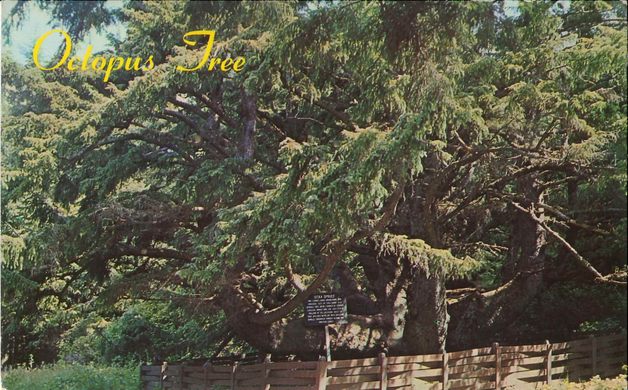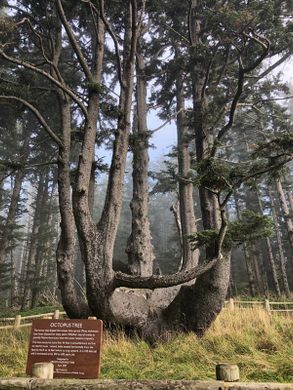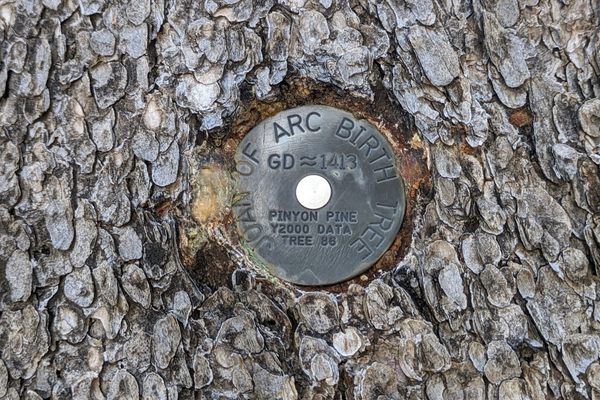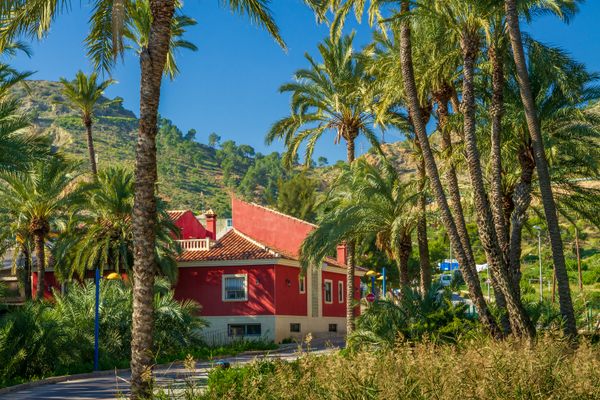AO Edited
Octopus Tree of Oregon
No one knows how this Pacific Northwest spruce tree came to have so many trunks.
Located at the Cape Meares State Scenic Viewpoint, the oddly-shaped, and even more oddly-named Octopus Tree of Oregon is a massive oddity, in the area, but such trees are more common to the coastal and mountain forests of the Pacific Northwest than most people realize.
The Octopus Tree (also known as the Council Tree, the Monstrosity Tree, and the Candelabra Tree) is believed to be around 250 to 300 years old. The tree itself extends from a central base that is nearly 50 feet around, and instead of shooting straight up with a central trunk, the body of the tree splits into a number of smaller trunks. The bizarre arbor has long been an attraction.
Some believe that the huge Sitka spruce was simply shaped by natural conditions such as extreme weather. However, it was Native Americans in the area who trained the tree into its cage-like assortment of thick vertical trunks. Such trees are common in the Pacific Northwest, and are known as culturally modified trees. Native Americans created the tree to hold canoes with corpses, in a practice known as “tree burial.” Culturally modified trees were also made to mark important places.
The tree is protected as a popular attraction by a short fence and its importance is explained by an informational sign. There are no octopi at the site, but hopefully this weird tree is interesting enough that that won’t be much of a disappointment.

























Follow us on Twitter to get the latest on the world's hidden wonders.
Like us on Facebook to get the latest on the world's hidden wonders.
Follow us on Twitter Like us on Facebook